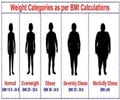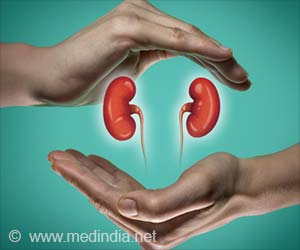Birth weight and maternal BMI modify the relationship between obesity and mortality rate.
- Obesity can lead to premature death
- Maternal BMI can influence obesity and mortality
- Birth weight is also a key factor in determining mortality
Birth Weight Moderates the Association Between Obesity and Mortality Rate
Go to source) . . The new study is based on the hypothesis that some fat people are metabolically healthy, which adds an important subtlety to the classic notion that obesity is associated with a higher mortality risk.
Indeed, mouse studies support the former notion by demonstrating that the lifetime of different mouse lines changed dramatically in response to caloric restriction (a proxy for lower fat deposition) versus ad-lib feeding. Some lines lived longer as a result, whereas others lived shorter lives.
Hereditary and Environmental Factors Influence on Health
This discrepancy could be the result of both hereditary and environmental factors. Early childhood exposures, for example, could hone survival reactions through a process known as ‘adaptive developmental plasticity.’In contrast, if those responses are incompatible with the environment, they may be harmful to the organism's health.
According to a previous study, mothers with a higher BMI at the time of birth had children who were more likely to die from any cause and require hospitalization due to cardiovascular problems.
Maternal Obesity can Put your Life at Back-Seat
Maternal obesity can alter the character of fetal development in a variety of ways. For example, modifications in fetal programming pathways or restrictive placental changes that impede fetal growth could occur. Another explanation is that abnormal hormonal patterns, such as hyperinsulinemia and increased leptin levels, result in increased levels of these hormones in the fetus, resulting in fetal macrosomia."These hypotheses [that the association between the BMI of the offspring and the mortality rate varies by birth weight and by maternal BMI] stem from the more general proposition that a mismatch between a propensity to obesity and achieved adult body weight increases the MR associated with being obese."
This might help us understand why the prevalence of obesity is increasing while the risk of death from cardiovascular disease is falling, along with the associated risk factors.
This study's data came from the 1958 National Child Development Survey, which was published in the Annals of Epidemiology. This ongoing study examines the adult weight of a group of people born in the United Kingdom over the course of one week in 1958, all of whom had their birth weight recorded.
What did the Study Reveal About BMI and Death Rate?
The researchers discovered a non-linear relationship between adult BMI and death rate. Women had a lower mortality rate than males, as did individuals with a BMI between 18 and 25 kg/m2 (the ‘normal’ range).As expected, the relationship between child BMI and mortality was greater in people with lower birth weights. This is because low birth weight predisposes the individual to hoard scarce nutritional resources when they become available in the form of fat. When such a person is exposed to an abundance of food, his or her adiposity rises, potentially producing overweight or obese people.
Surprisingly, children born to moms with a lower BMI had a higher link between their BMI and death. The mortality rate was higher among babies born with low birth weight or moms with a higher BMI at any BMI range above 25, widely regarded as the overweight threshold.
The paternal BMI did not moderate this association until the offspring's BMI exceeded 20 kg/m2.
This is simply explained when the child is born with a low birth weight. In such a circumstance, the fetus's in-utero exposure in a sparse environment fails to prepare it for life in a plentiful postnatal environment.
A mismatch of this magnitude may influence the quantity of fat laid down, as well as where it is laid down and how it participates in the body's metabolism, including insulin sensitivity. This could help us understand how and why the relationship between obesity and a higher mortality rate differs amongst people and communities.
Second, a deprived environment in utero could explain the surprisingly stronger relationship between increasing maternal BMI and higher mortality in adult fat offspring.
Prenatal programming based on undernutrition (rather than overnutrition) can result in intrauterine growth restriction and low birth weight. This could explain the offspring's adult obesity trend, presumably reflecting the lifelong impacts of these early exposures.
Future research should look at this concept, especially because more infants are being born to obese mothers today. Such research could help detect if and how this relationship alters as more mothers enter pregnancy with a high BMI throughout time by comparing current trends in the correlation of obesity with mortality with those of future generations.
Reference:
- Birth Weight Moderates the Association Between Obesity and Mortality Rate - (https://www.sciencedirect.com/science/article/abs/pii/S1047279723000595)
Source-Medindia
















